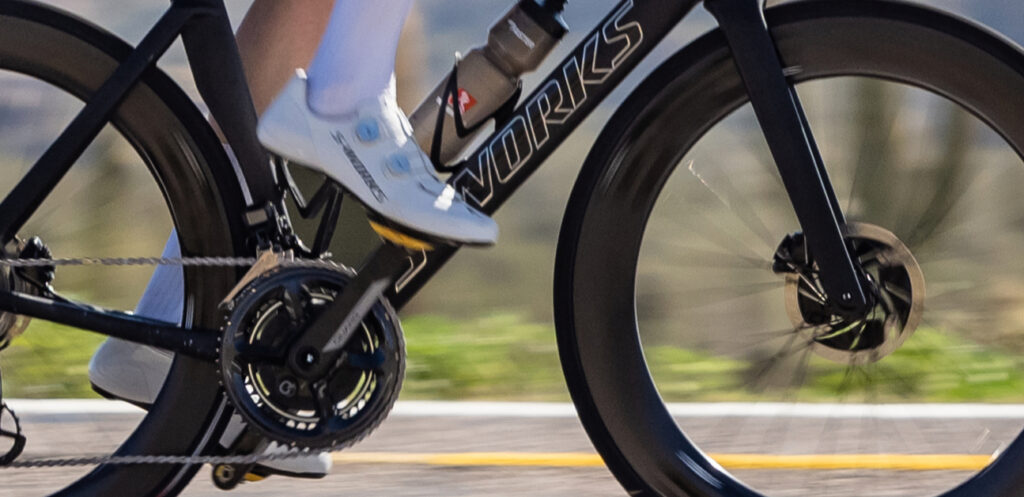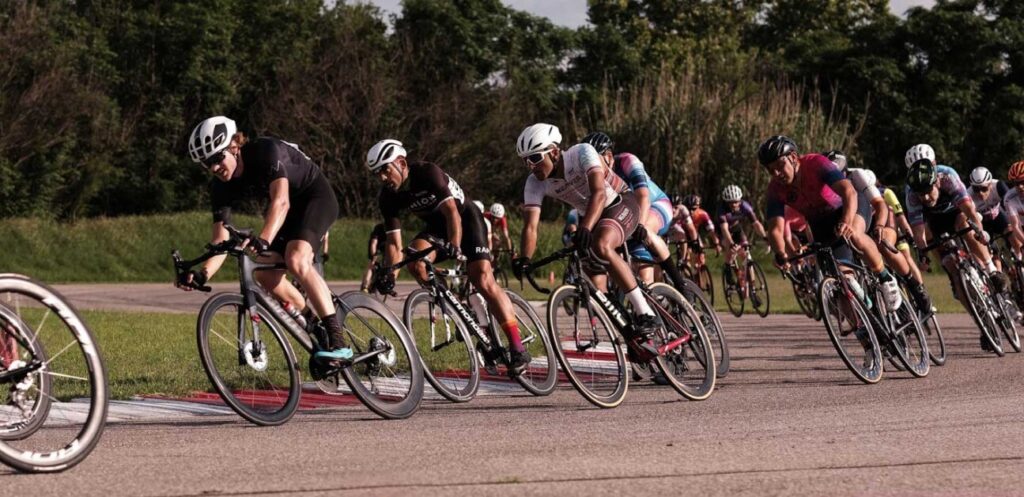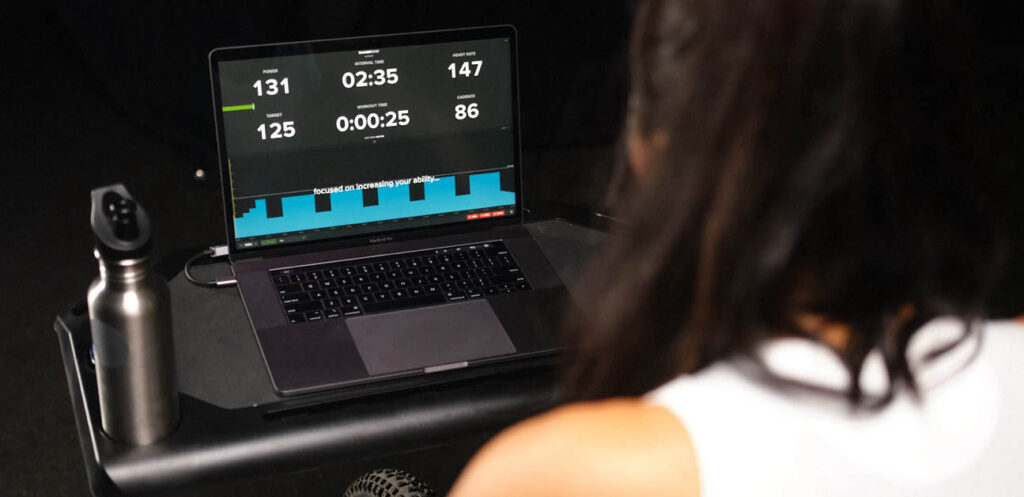How to Get Faster at Cycling: 3 Strategies to Improve Your Average Speed at Any Age
Every cyclist wants to get faster. We’re constantly looking for ways to get stronger, fitter, and more aerodynamic, all with the goal of improved performance on the bike. What’s the most effective way to get faster?
The Factors That Affect Your Speed
Bicycles are simple machines, converting the force you push into the pedals into kinetic energy that propels you forward. But the physics of a bike are deceptively complex, with a host of interacting forces affecting your speed when you ride.
These forces include gravity, which is a major factor when riding uphill. Gravity also pushes your tires into the ground below, creating a frictional force called rolling resistance that can take 20 watts or more to overcome. Your bike’s drivetrain plays a part, too—mechanical inefficiencies consume over 3% of the total energy you expend while riding. And finally, there’s air resistance, the biggest opposing force of all. The faster you go, the more significant it becomes; at high speeds over 90% of the energy you put into the pedals goes towards overcoming aerodynamic drag.
While these resistive forces conspire to slow you down, the energy your legs transmit into the pedals works to move you forward. Simply put, the more power you produce, the faster you go. This means improving your speed is a two-part task: a combination of reducing the forces working against you, and increasing your ability to generate power. Let’s compare the relative value of 3 different strategies to reach these goals.

Strategy 1: Improve Your Cycling Speed With Faster Equipment
High-end equipment tends to be lighter, more efficient, and more aerodynamic than entry-level stuff. It also tends to be more expensive—sometimes dramatically so. So while some equipment improvements are low-hanging fruit, others offer remarkably little return on investment, besides making your bike look cool.
Aero helmets and clothing offer some of the most economical gains. While they are by no means cheap, they offer a meaningful aerodynamic benefit at a comparably low price. With a combined 25 watts of potential improvement, that works out to a nearly 3-minute improvement over the course of an average 40k road Time Trial. Deeper wheels can be nearly as beneficial, albeit at a much greater expense. Further upgrades like a new frame can also make you a little faster, but these gains come at a high cost.
Rolling resistance is a can of worms, with rider weight, surface conditions, and even different testing methods resulting in conflicting recommendations. But it’s safe to say that with the right tire, rims, and pressure combination, you can be significantly faster than with a less-optimized setup. Drivetrain efficiency is similarly controversial, but the evidence clearly shows that by using 2x gearing (and riding in the big ring), waxing your chain (or using certain high-quality drip lubes), and riding with a straight chainline you can be more efficient. You can even get a few more watts of improvement by upgrading to oversized pulley wheels, though these generally have one of the worst cost/benefit ratios of all equipment upgrades.
Improving Your Cycling Speed With Better Equipment Takeaways
- Pros: Potentially significant speed improvements. Your bike will look cooler with expensive parts.
- Cons: Can be extremely expensive. Diminishing return on investment for many components.
- The Bottom Line: Aero helmets, tight-fitting kit, and better tires are worth the investment for many athletes. Other expensive upgrades can probably wait until you’ve maximized other improvements.

Strategy 2: Improve Your Cycling Speed With Better Technique
While buying faster gear generally comes with a significant cost, adjusting your riding technique to make yourself faster is completely free. Best of all, it can be quite effective.
In technical disciplines such as mountain biking and cyclocross, technique is everything. But it’s even important on road and gravel—simply checking the weather before your ride and planning a route that avoids any forecast headwinds can significantly improve your overall speed. Likewise, drafting off of other riders in a pack can reduce your workload by 30%-40%, and as you gain experience riding with others you’ll become more efficient at tucking into the slipstream. But even if you’re riding alone into the wind, a more aerodynamic position makes you faster, potentially saving as much as 35w—about 3 minutes over the course of a 40k TT.
And then there’s fueling. All of the aerodynamic improvements in the world won’t help if you bonk and run out of calories, and many riders chronically under-fuel their rides and workouts without even realizing it. Paying close attention to nutrition while on the bike can have a profound effect on your cycling speed, especially for long and intense rides.
Improving Your Cycling Speed With Better Technique Takeaways
- Pros: It’s free! All it takes is practice and building good habits.
- Cons: Technique takes time and practice to improve. Some strategies only work in certain situations—you can’t draft alone, and you can’t always avoid headwinds.
- The Bottom Line: Better fueling habits will improve every workout, ride, and race you do, and there’s no downside to improving your cycling skills. Still, technique alone won’t make you fitter.

Strategy 3: Improve Your Cycling Speed with Structured Training
There’s an old saying that “it’s not the bike, it’s the engine,” and in the end it’s true. No matter how perfectly optimized your equipment, technique, and strategy, the biggest limitation of all is your ability to put power into the pedals. Improve your fitness and endurance and you’ll be faster across the board, and all the small steps you make to become more aerodynamic and efficient can serve as the proverbial icing on the cake.
To grow your engine, you need to push yourself beyond your current capacities. This disrupts your body’s internal homeostasis and triggers physiological adaptations that leave you fitter and faster than before. So how do you make this happen? If your starting fitness is relatively low, simply riding a lot can be enough, but your improvement will quickly plateau as your fitness improves. For significant, long-term improvements no matter your starting point, you need structured training.
Structured training takes a systematic approach, targeting your body’s energy systems with specially-designed workouts. Sequences of workouts that balance periods of stress with easier days and weeks allow you to push your limits and productively recover. Well-designed structured training starts by developing your foundation of aerobic endurance; it then addresses higher-intensity anaerobic abilities and improves your ability to ride harder for longer. Finally, it rounds out your discipline-specific skill set with workouts that match the demands of your target events or favorite riding style.
Improving Your Cycling Speed With Structured Training Takeaways
- Pros: It’s incredibly effective. It makes you faster in all situations and for all riding styles. It’s extremely affordable. It’s designed around your goals and works with your schedule, and with Adaptive Training, it adjusts in real-time to respond to your needs.
- Cons: Your friends will be jealous of how much faster you’re getting.
- The Bottom Line: Simply put, structured training is the most impactful way to get faster. You can use Plan Builder to create a season-long Adaptive Training plan that builds you towards your goals, or you can choose structured workouts as you go with TrainNow. Either way, it’s going to make you faster, and you’ll even have enough money left over to buy that aero helmet.
Average Cycling Speed By Age
Inevitably, every discussion of getting faster involves a comparison to other riders. Many athletes worry they’re too inexperienced, or too out of shape, or too old to benefit from the improvements of structured training. In fact, None of these common fears are true, and average cycling speeds recorded in TrainerRoad back this up.
The past 365 days of outdoor rides in TrainerRoad’s database reveal the following trends in individual athletes’ average speeds when averaged across age groups:
| Athlete Age | Overall Average Speed: Men | Overall Average Speed: Women |
|---|---|---|
| 6–19 | 13.73mph / 22.1 kph | 12.17mph / 19.6 kph |
| 20–29 | 15.16 mph / 24.4 kph | 13.42 mph / 21.6 kph |
| 30–39 | 14.66 mph / 23.6 kph | 12.86 mph /20.7 kph |
| 40–49 | 14.35 mph / 23.1 kph | 12.9 mph / 20.8 kph |
| 50–59 | 14.41 mph / 23.2 kph | 12.04 mph / 21.0 kph |
| 60+ | 14.04 mph / 22.6 kph | 12.6 mph / 20.3 kph |
Looking at average speed alone does have its limitations, because it includes many different types of riding styles, in all different conditions on varied terrain. But notice that even as athletes get older, average speed doesn’t decline by all that much. In fact, it even increases amongst some older TrainerRoad athletes as compared to their younger peers—a testament to the impact structured training can have for athletes of any age .
How to Get Faster at Cycling: In Conclusion
No matter your age or experience level, you can get faster at cycling, and there are 3 major strategies to making this happen. Smart athletes combine all 3 approaches—better equipment, better technique, and especially a better engine developed with structured training.
